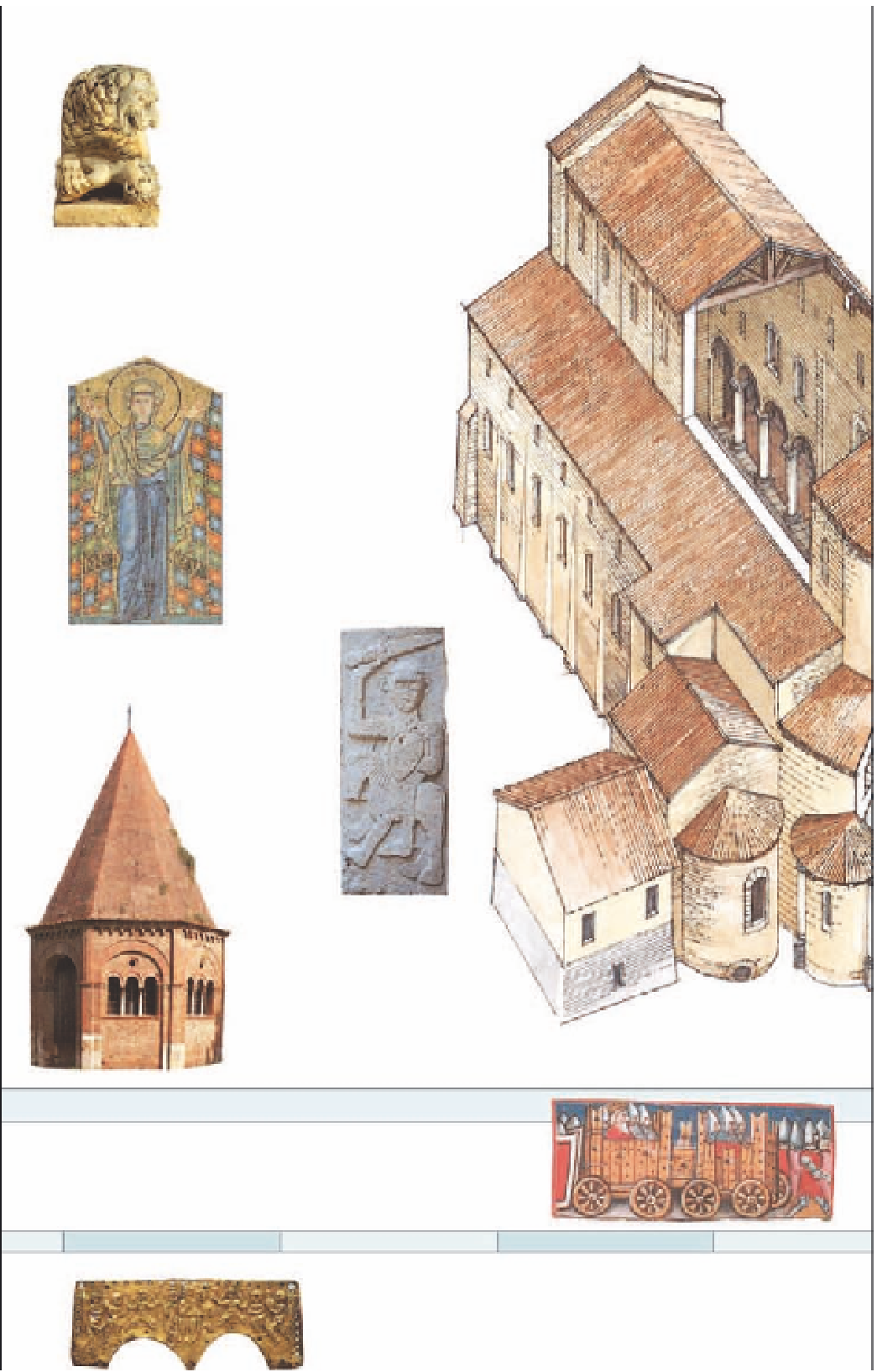Travel Reference
In-Depth Information
Early Medieval Tuscany
The church kept the flame of learning alive
during the dark years when Tuscany
was under attack from Teutonic tribes
such as the Goths and Lombards.
Charlemagne, responding to the pope's
request for help, drove the Lombards
out of Tuscany in the 8th century. He
was crowned Holy Roman Emperor
as his reward, but this was soon
to spark off a long conflict
between church and emperor about who
should rule Italy.
Early churches
have simple
wooden joists.
Medieval
carved stone
lion
Mosaic Madonna
A 12th-century mosaic
of the Virgin from
Cortona
(see p204)
is typical of the
Byzantine-influenced
art of the early
medieval period.
The capitals
are carved
with biblical scenes.
Knight on Horseback
This 11th-century
carving from
Sovana's cathedral
symbolizes the
conflict between
pope and
emperor over
control of the
church.
Priests'
quarters
Chapel of Sant'Agata
Like most early churches in
Tuscany, the 12th-century
octagonal brick chapel in Pisa,
with its pyramid-shaped roof, was
built on the grave of a Christian saint
martyred by the Romans
(see p156).
Semi-circular chapels
with limpet-shell roofs are a
typical feature of the period.
TIMELINE
552
Totila the Goth
attacks Florence
Carts used by
Charlemagne's
army in battle
570
Lombards conquer
northern Italy
500
600
700
800
774
Charlemagne, King of the
Franks, begins a campaign to
subjugate the Lombards
7th-century Lombardic gold
crown in the Bargello Museum,
Florence
(see pp68-9)
800
Charlemagne crowned
Holy Roman Emperor











































